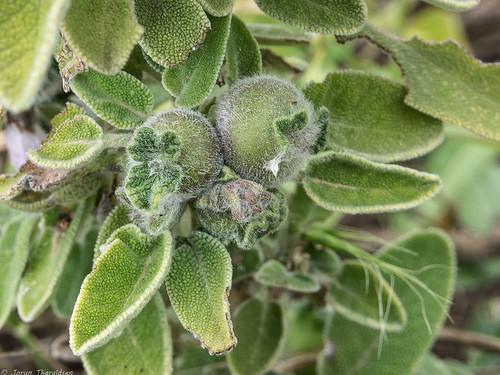The galls are actually not that small,
Salvia fruticosa produces quite large galls. According to Wikipedia: 'In its native habitat, it frequently develops woolly galls about 1 inch in diameter which are called 'apples'. These 'apples' are peeled and eaten when they are soft, and are described as being fragrant, juicy, and tasty.The formation of galls was originally thought to be limited to
Salvia pomifera,[13] which led to the misidentification of many gall-bearing
Salvia fruticosa plants. In 2001 it was discovered that the galls on
Salvia fruticosa were caused by a previously undiscovered genus of Cynipid gall wasp.'
I haven't tasted them myself, but I have a photo from Crete taken two years ago.

P4100638 Salvia fruticosa gall.jpg by
Jorun Tharaldsen, on Flickr